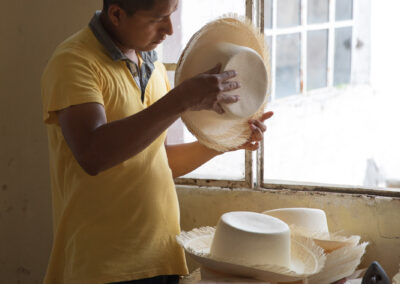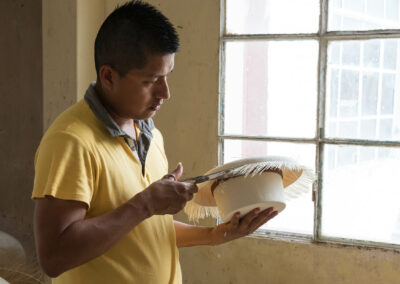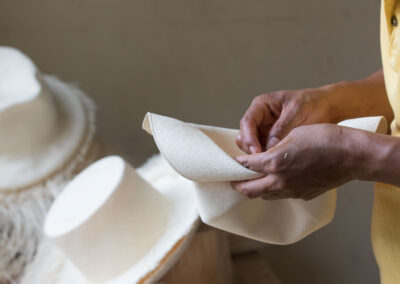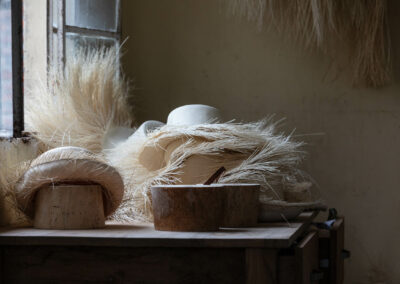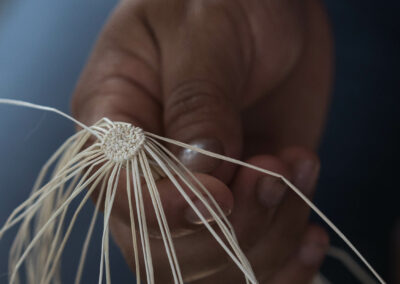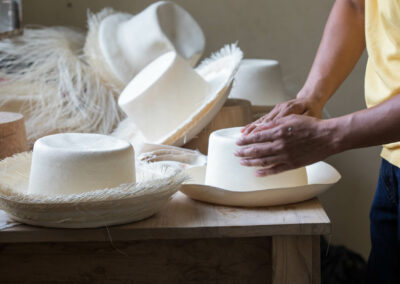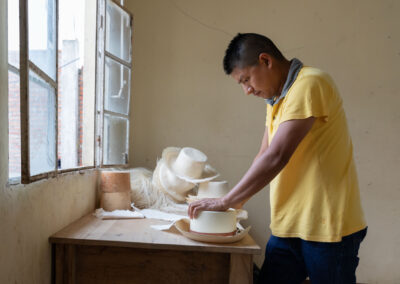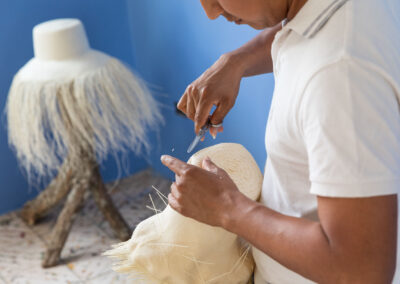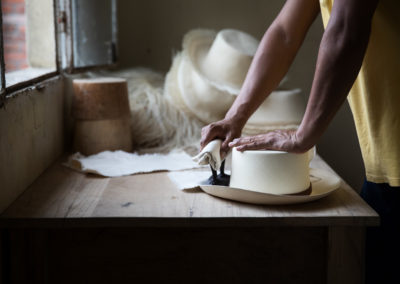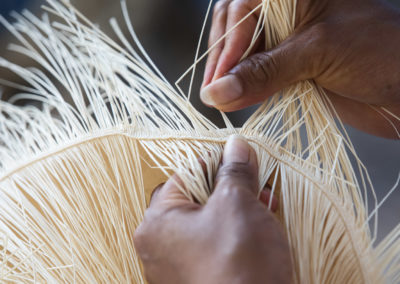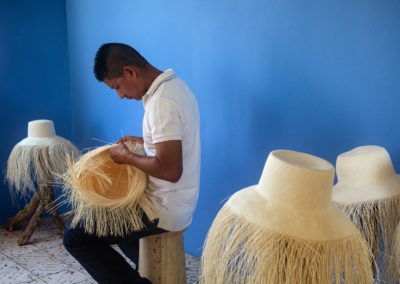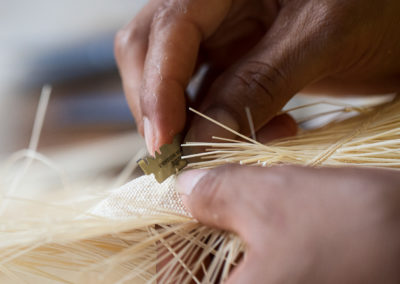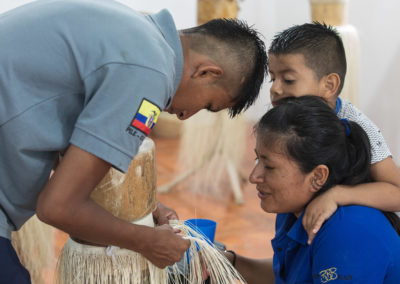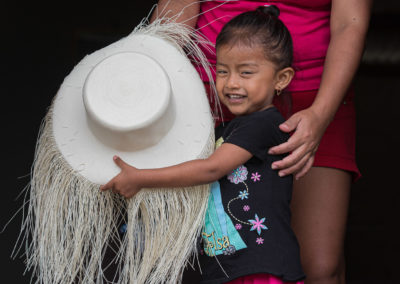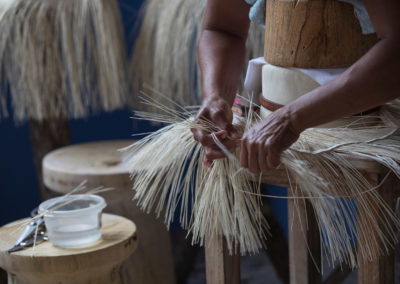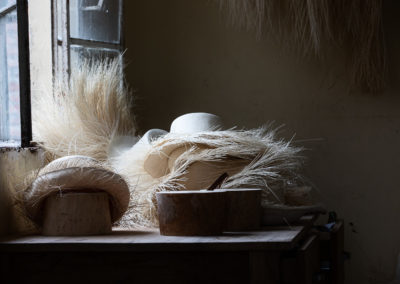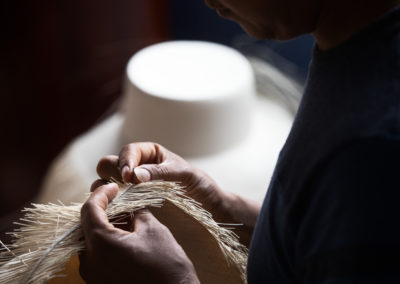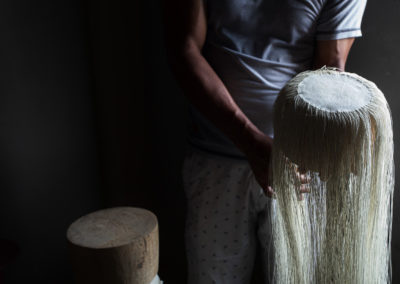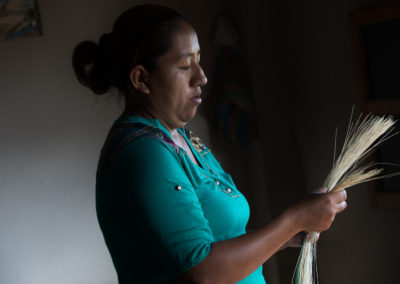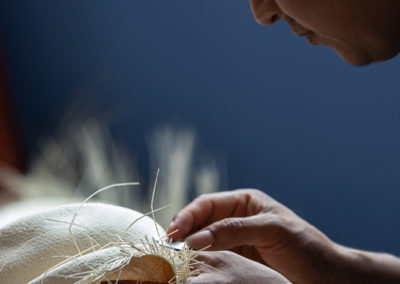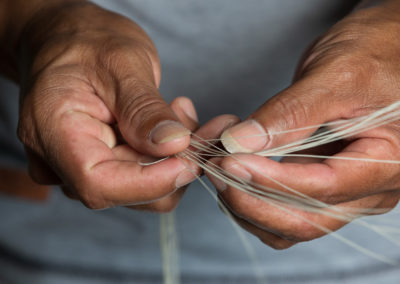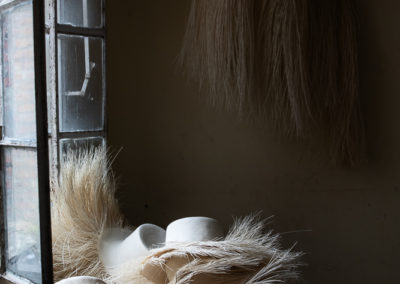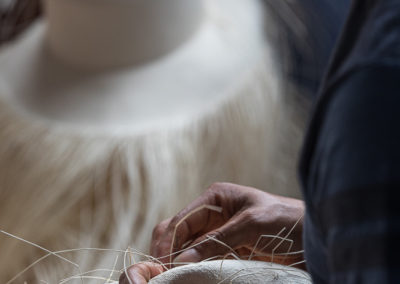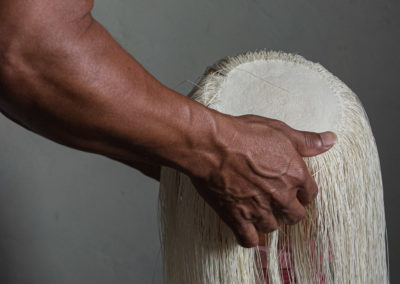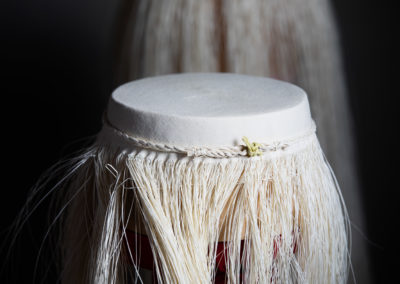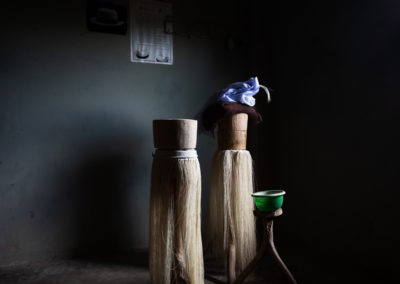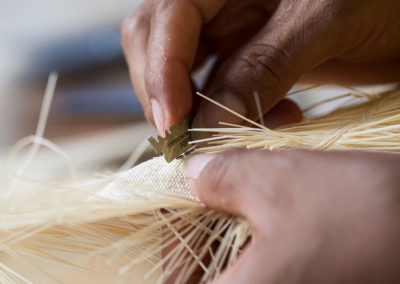Montecristi Panama Hats
The Art of Weaving Straw into Gold
Sheer as silk, costlier than gold, the colour of fine old ivory, a Montecristi Panama hat is the pinnacle of the hat weavers’s art, as much a work of fine art as it is of high fashion. These are not the Panamas you find in department stores, not even posh department stores, but are rare pieces handled only by specialist dealers. They can cost thousands of dollars and can take months to weave. The finest specimens will have over 4000 weaves per square inch, more than a third of a million in a single hat, a weave so fine it takes a jeweller’s loupe to count the rows. And every single one of these weaves is done by hand. No loom is used, only dextrous fingers, sharp eyes and a Zen-like concentration. It’s a collaborative art. After the weaver has finished his or her part in the process, the raw hat body passes through the hands of a cavalcade of specialist finishing artisans to prepare it for blocking – the final sculpting of the hat into those styles we all know and recognise as a Panama hat: fedora, optimo, plantation. I’ve been long been interested in these iconic hats and the gently old-fashioned world in which they are made, in the hills above the town of Montecristi, Ecuador. The finest weavers live in an obsure village called Pile. I spent time there and shot this series of images which appeared in the New York Times.






